You have to hand it to these summer lawn diseases — they have some pretty cool names.
Red thread. Dollar spot. Ascochyta leaf blight. (Bonus points if you can pronounce that one.)
But are they cool enough to keep around? No. They make your lawn look bad and result in dead spots.
Here’s how to get rid of summer lawn fungus.
First, What Are These Things?
Summer lawn diseases are various kinds of fungus that thrive in the high temperatures and high humidity of summer.
They’re unsightly, good at making you sigh or grumble when you look out at your lawn and see the ugly mess they’ve made.
Left untreated, they can spread and kill areas of your lawn.
Here’s a look at the most common summer lawn diseases in Wisconsin and Minnesota and some tips on lawn disease control.
Red Thread Lawn Disease
Yes, this one actually looks like red threads in your lawn.
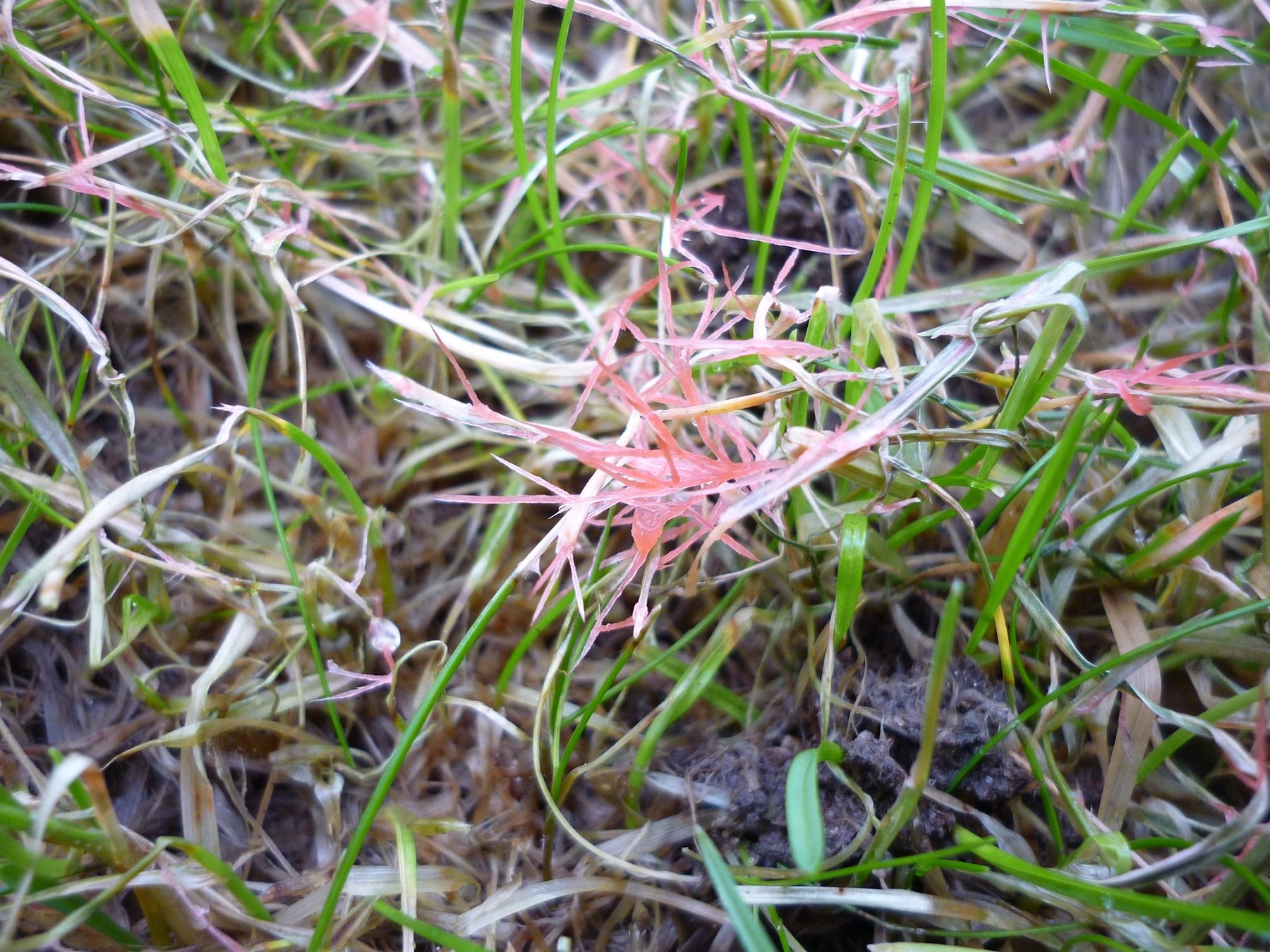 You’ll see tan, pink, or red circular patches ranging in size from a few inches to two feet in diameter.
You’ll see tan, pink, or red circular patches ranging in size from a few inches to two feet in diameter.
Red tendrils will protrude from affected leaf blades — the “red threads” that give the disease its name.
Red thread lawn disease doesn’t affect the roots of your grass, so your lawn will recover.
Lawn disease control tip: It helps to fertilize your lawn well in the fall and spring so your lawn is healthy and has a better chance of surviving this summer lawn fungus.
Dollar Spot
Dollar spot thrives in high humidity, in lawns that lack nitrogen.
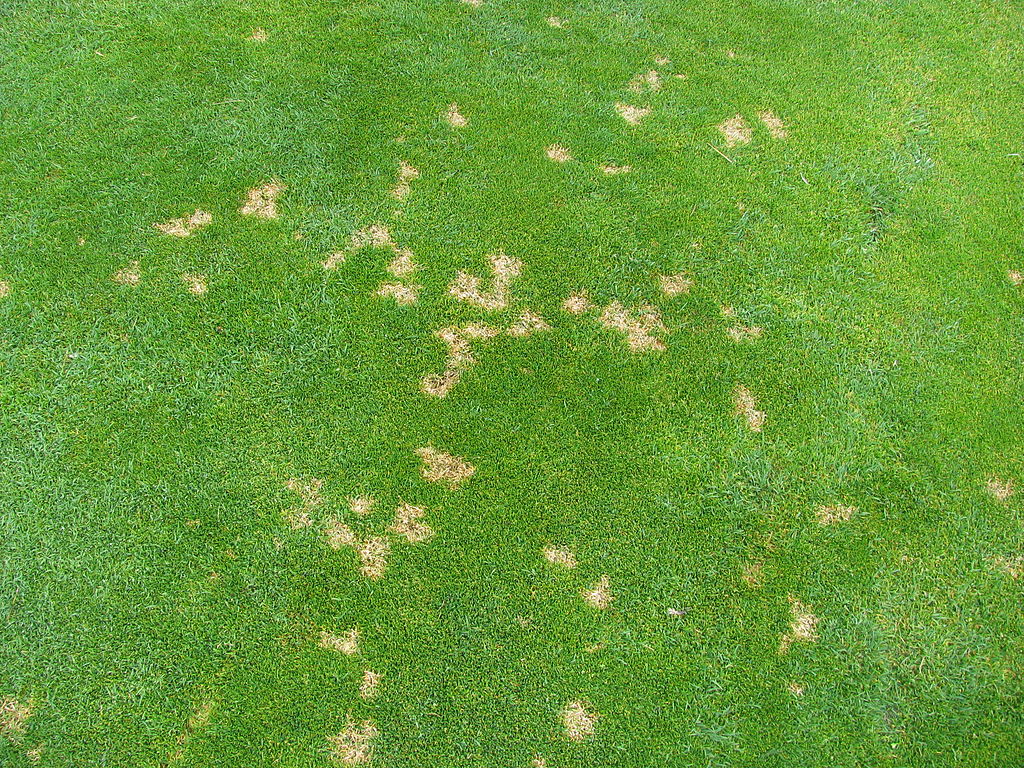
You’ll notice bleached patches ranging from a few inches to a foot in diameter.
Lawn fungus control tip: Don’t water too often — you don’t want your lawn to be too wet. Applying nitrogen can help your lawn recover.
Necrotic Ring Spot
This summer lawn fungus loves cool and wet conditions, followed by heat and drought.
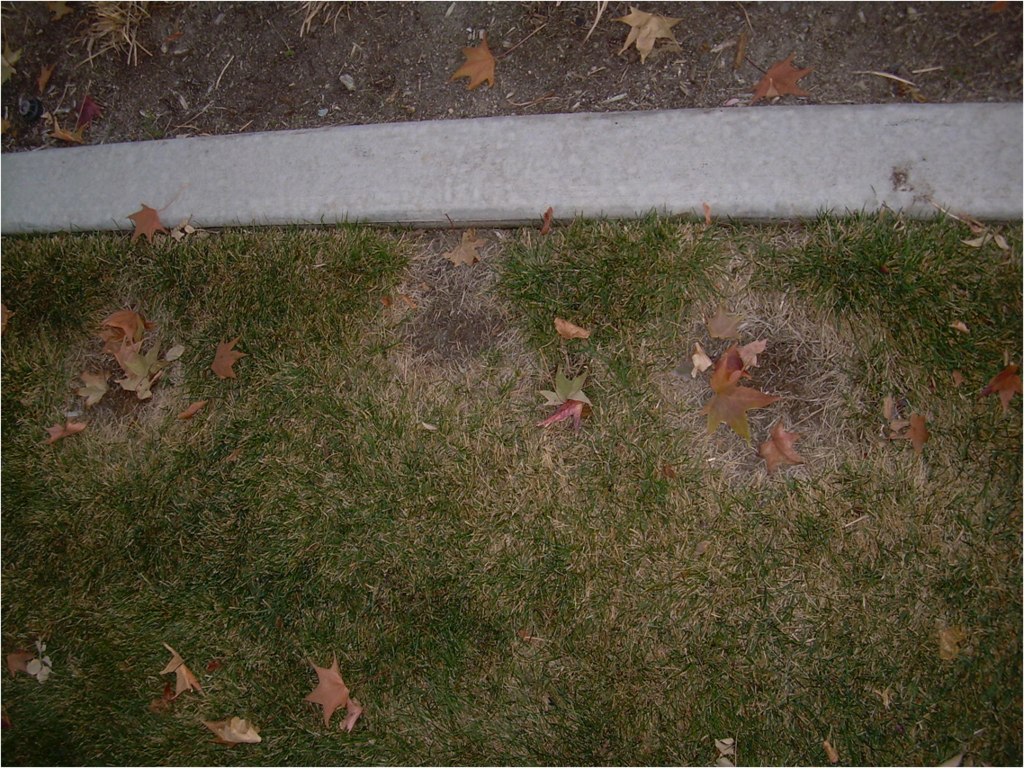 Is your lawn compacted and in need of aeration? Necrotic ring spot loves that.
Is your lawn compacted and in need of aeration? Necrotic ring spot loves that.
You’ll see circular straw-colored patches usually less than 12 inches across.
It’s most common in newly sodded lawns, but it will hang out in seeded lawns, too.
Lawn disease control tip: Aeration, aeration, aeration. You want to reduce compaction and improve your lawn’s drainage. Keep on top of your fertilizer, too.
Ascochyta Leaf Blight
High temperatures and humidity can cause this summer lawn fungus to set in.
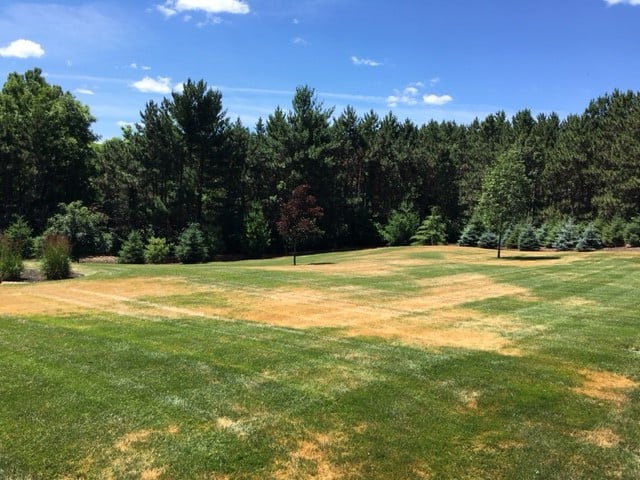 Ascochyta Leaf Blight causes large irregular patches of turf to quickly turn straw-brown in color and appear dead.
Ascochyta Leaf Blight causes large irregular patches of turf to quickly turn straw-brown in color and appear dead.
Its claim to fame: it can appear suddenly, even overnight.
Lawn fungus control tip: To manage this summer lawn fungus, reduce thatch with core aeration at least once a year to allow better water penetration.
Keep your grass height between 2.5 and 3 inches and avoid mowing during wet weather.
Your turf may look dead from a distance, but this summer lawn fungus doesn’t affect your turf’s crowns or roots. So your grass should recover in 2 to 3 weeks, depending on weather conditions.
Brown Patch
This summer lawn fungus occurs in Minnesota and Wisconsin in mid- to late-summer when the weather is hot and humid.
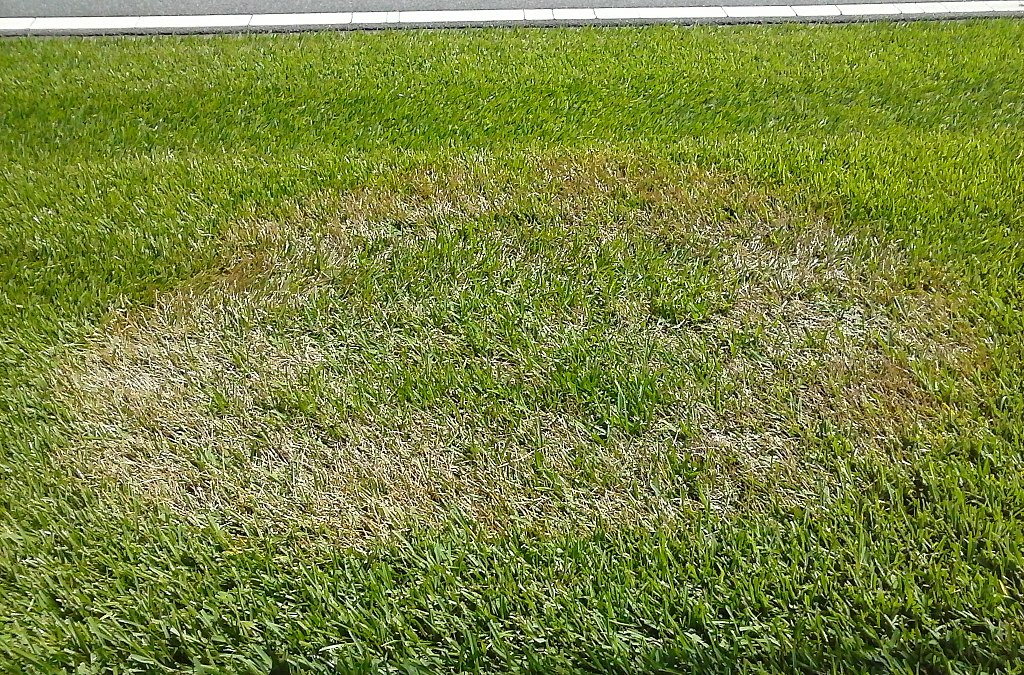 Brown patch lawn disease appears as irregular circular patches in the lawn that are brownish yellow in color and range from six inches to several feet in diameter.
Brown patch lawn disease appears as irregular circular patches in the lawn that are brownish yellow in color and range from six inches to several feet in diameter.
Your lawn is extra susceptible to brown patch if you water too much, add too much nitrogen, have poor soil drainage, compacted soil, or too much thatch.
Lawn disease control tip: Don’t over-fertilize or over-water. Water early in the day, so your lawn has time to fully dry before evening. Aerate and dethatch every year.
Lawn Disease Control
Your best bet to control summer lawn fungus is to prevent it in the first place, with proper mowing, watering, and fertilizing.
A healthy lawn is better equipped for trauma like drought, insects, and summer lawn diseases.
Treating Lawn Fungus
If you have the same summer lawn fungus issue every year, we can help prevent it with a fungus control product.
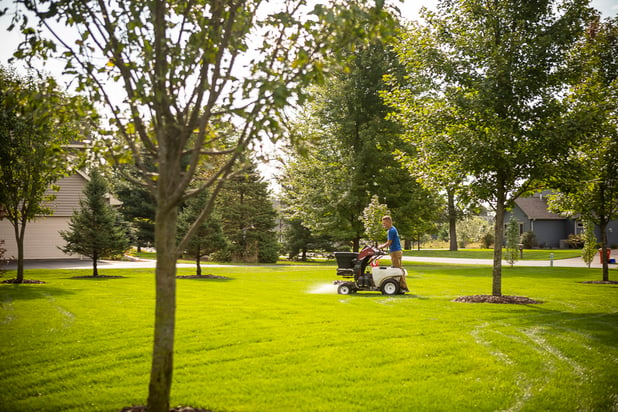 But typically, we treat these summer lawn diseases when they pop up.
But typically, we treat these summer lawn diseases when they pop up.
Be patient. It can take a month or longer to see results. It always takes multiple treatments.
Sometimes your lawn will need extra attention after summer lawn diseases.
With necrotic ring spot, it’s common to need aeration, overseeding, and pH treatment to get your lawn back to its healthy condition.
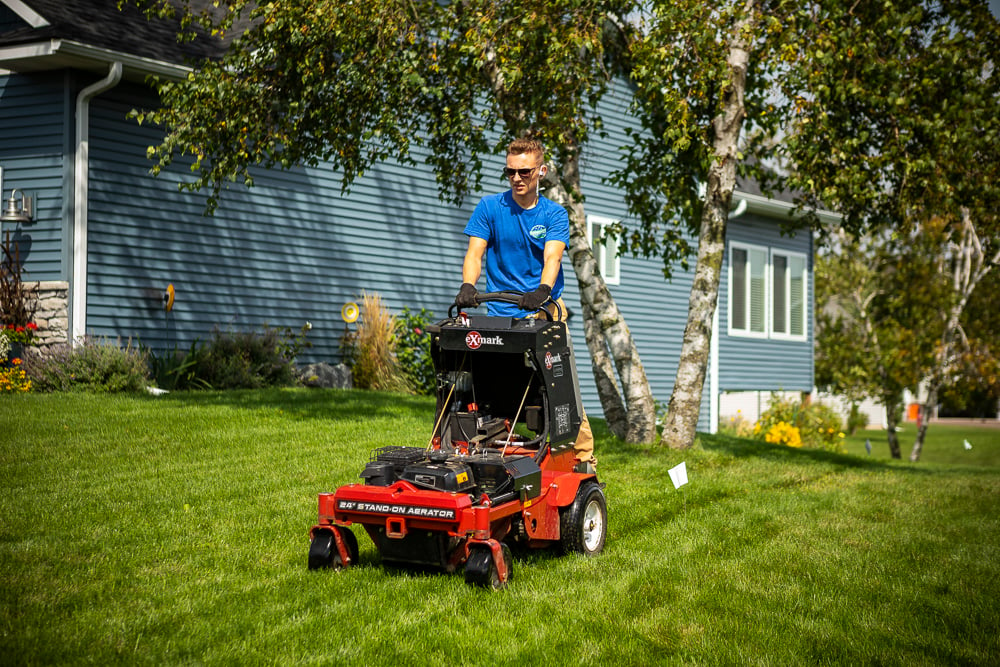 Each of these summer lawn diseases is caused by environmental conditions, so fixing those conditions is key to banishing the fungus.
Each of these summer lawn diseases is caused by environmental conditions, so fixing those conditions is key to banishing the fungus.
Summer Lawn Diseases? Call RainMaster
Nobody wants to look out at the lawn and see stringy red threads, big bleached circles, brown patches, or dead lawn.
Yuck.
Summer lawn diseases attach your lawn just when you want to enjoy your yard the most.
Keep summer lawn fungus from creeping in by setting up your lawn for success, with a proactive lawn care program that includes a custom nutrition plan and aeration for your lawn. The roots will be nourished, the soil packed with nutrients and drain better, and your lawn thick and healthy, so summer lawn diseases will have a harder time taking hold.
Also, consider a regular irrigation maintenance program, to make sure your sprinkler system delivers the right amount of water at the right time so you're not encouraging summer lawn fungus.
Want to be confident about your choice for lawn care services in Eau Claire, WI or Minneapolis? Request a quote today! We’ll review your lawn care options together so you can make a great choice. Then, you can finally enjoy your lawn and stop worrying about it.
Image sources: red thread, dollar spot, necrotic ring spot, brown patch



